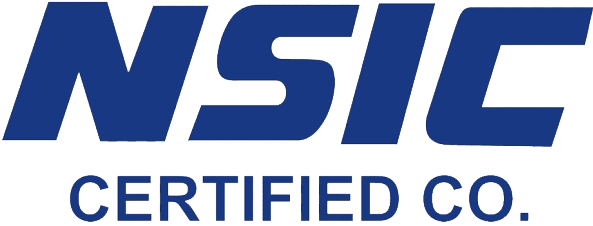Okay, so check this out—I’ve been juggling my crypto stash for a while now, and I gotta say, relying on just an exchange or a mobile app feels kinda shaky. Seriously? Yeah, because when you think about it, leaving your coins floating around online isn’t exactly the safest bet. Something felt off about that for me early on. I mean, you want control, right? Not just convenience.
So, naturally, I started digging into desktop apps paired with hardware wallets. The combo feels like having a fortress for your crypto. At first, I thought, “Isn’t that overkill for an average user?” But then I realized how a desktop app offers both convenience and security that mobile apps often can’t match. Plus, hardware wallets add that extra layer of cold storage protection that’s hard to beat.
Here’s the thing. Managing your portfolio on a desktop app means you’re not at the mercy of sketchy internet connections or app crashes. You’ve got a solid interface, more detailed analytics, and usually better integration with hardware wallets. And yeah, I’m biased, but having a physical device like a hardware wallet gives me peace of mind I just don’t get from software-only solutions.
Whoa! But don’t get me wrong—this isn’t just about security. It’s about control and flexibility. You can track your assets, rebalance your portfolio, and even interact with decentralized finance apps, all without exposing your private keys online. On one hand, exchanges promise ease of use, though actually, the risks have bitten plenty of folks. So, why not take some of that power back?
Now, I’m not saying it’s perfect. There’s a learning curve, and sometimes the setup feels like a bit much. But once you get the hang of it, the benefits really shine through. Oh, and by the way, if you’re considering a hardware wallet, the safepal official site offers some really user-friendly options that blend well with desktop portfolio apps.
How Desktop Apps Change the Game
First impressions matter. When I started using desktop crypto apps, I noticed right away that the interfaces tend to be more robust. You get detailed charts, portfolio summaries, and often support for multiple wallets all in one place. Hmm… that’s something mobile apps often lack, partly because of screen size limits and partly because of simplified designs.
At the same time, desktop apps run locally, which reduces the attack surface compared to web-based platforms. That’s a technical detail, but it really matters if you care about security. You’re not constantly sending data over the internet, which lowers the risk of interception or phishing attacks.
Really? Yeah, because when you think about it, managing crypto is not just about buying and selling. It’s about understanding your exposure, tracking gains and losses, and sometimes even automating trades or alerts. Desktop apps frequently support plugins or advanced features that make these tasks easier. I’ve personally used a few that let me set custom notifications when a coin hits a certain price, which is super handy.
Still, the main challenge is syncing hardware wallets with these apps. Some setups are clunky, and the user experience can be frustrating for beginners. But, the good news? Wallets from brands like SafePal have made this process much smoother. Their compatibility and straightforward software mean you can avoid the usual headaches.
Actually, wait—let me rephrase that. While SafePal is great, not every hardware wallet integrates seamlessly with every desktop app. So, it’s smart to check compatibility beforehand. That’s why visiting their official site helps you avoid buying something that won’t mesh well with your favorite portfolio manager.
Hardware Wallets: The Cold Storage Advantage
Look, I’m gonna be honest—hardware wallets aren’t as sexy as flashy apps, but their role is crucial. They keep your private keys offline, making hacking nearly impossible. This is especially important if you hold significant amounts of crypto or want to sleep peacefully without worrying about exchanges going under.
Something I learned the hard way: software wallets can be compromised by malware or phishing scams. A hardware wallet acts like a vault that’s disconnected from the internet, so even if your computer gets infected, your keys stay safe. It’s a bit like keeping your cash in a safe deposit box rather than your wallet.
Now, the trade-off is convenience. You can’t just click “send” instantly; you physically approve each transaction on the device. At first, this slow-down bugged me. But then I realized it’s actually a feature, not a bug. That extra step forces you to double-check and prevents accidental transfers or hacks.
Whoa! Plus, hardware wallets often support multiple cryptocurrencies, so you don’t need a separate device for each coin. That’s why I recommend checking out options on the safepal official site —they offer solid multi-coin support with affordable prices.
On a side note, some hardware wallets let you connect via Bluetooth, which some folks find convenient. But honestly, I prefer wired connections to avoid any wireless vulnerabilities. Yeah, it’s a bit less convenient, but I’m more about security than speed.
Putting It All Together: Workflow Tips
Here’s what bugs me about some portfolio setups: they either focus too much on security or too much on usability, rarely both. The sweet spot is a desktop app that syncs effortlessly with a hardware wallet, letting you manage your portfolio without exposing your keys.
My workflow usually looks like this: I open my desktop portfolio app, connect my hardware wallet, and review my balances and recent transactions. Then, if I want to move or trade, I initiate the transaction in the app, but the wallet requires me to confirm it physically. Simple, but effective.
And yes, keeping backups of your seed phrases is very very important. I keep mine in a fireproof box (old-school style) because digital backups can be risky. This might sound paranoid, but in crypto, paranoia is part of the job description.
Initially, I thought all this was overcomplicating things. But after a few near-misses with phishing attempts and exchange hiccups, I’m sold. The peace of mind is worth the small hassle.
Check this out—if you want to dive deeper, the safepal official site provides tutorials and user guides that really help smooth the learning curve.

Final Thoughts: Taking Control Without Losing Your Mind
So, where does all this leave us? Managing your crypto portfolio through a desktop app combined with a hardware wallet isn’t just about tech—it’s about mindset. You’re taking ownership, stepping away from the “set it and forget it” mentality that’s so tempting but risky.
At first, it might feel like a pain to set up and learn. But honestly, once you get rolling, it’s empowering. You’re not just watching your crypto; you’re actively managing and protecting it with tools that fit your needs. And hey, if you mess up occasionally or feel a bit overwhelmed, that’s normal. Crypto is a wild ride.
Anyway, I’m not 100% sure everyone needs this level of control, especially beginners. But if you’re serious about your holdings and want to avoid the horror stories, this approach is worth exploring. Just remember to do your homework, and if you want a solid start, check out the safepal official site for reliable hardware wallets that play nicely with desktop apps.
Alright, I’ll leave you with this—your crypto journey is personal, and sometimes the best way forward is to combine old-school security with modern tech. Trust your gut, take your time, and keep those keys close.










